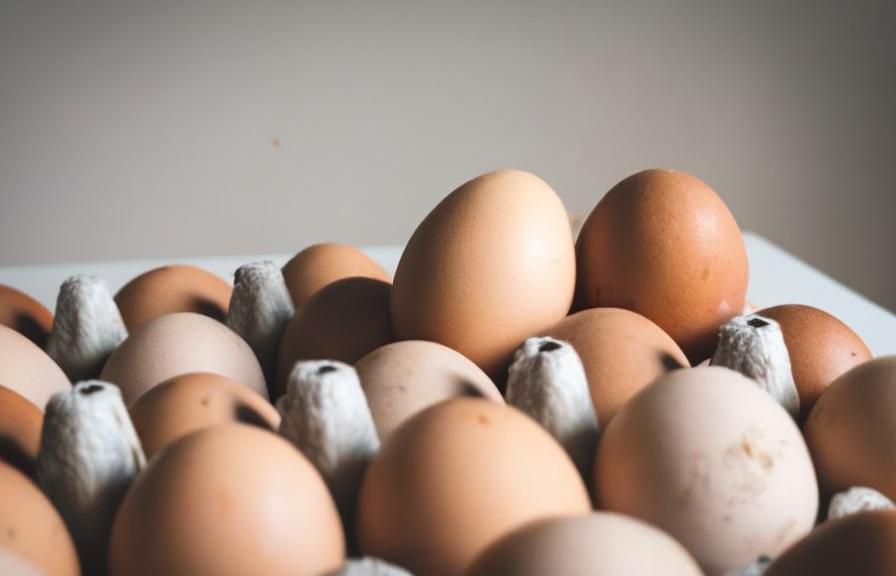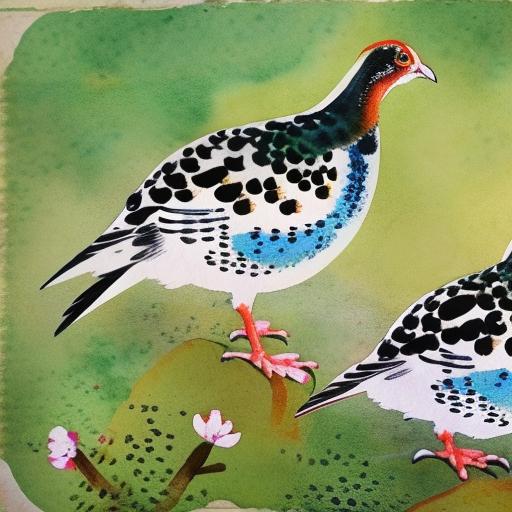Chinese quail breeding is a popular and rewarding endeavor for many poultry enthusiasts. Quails are small, hardy birds that are relatively easy to care for and breed, making them an ideal choice for beginners and experienced breeders alike. Chinese quails, also known as Coturnix quails, are particularly sought after for their delicious meat and nutritious eggs. They are also known for their fast growth and high egg production, making them a profitable option for those looking to raise quails for commercial purposes. Whether you are interested in breeding quails for personal consumption or for sale, understanding the basics of Chinese quail breeding is essential for success.
Chinese quail breeding involves selecting the right breeding stock, providing appropriate housing and equipment, ensuring proper nutrition and feeding, managing the breeding and incubation process, caring for quail chicks, and addressing common challenges and troubleshooting issues that may arise. By following best practices and paying attention to the specific needs of Chinese quails, breeders can maximize their success and enjoy a thriving quail breeding operation. In this comprehensive guide, we will explore each of these aspects in detail, providing valuable insights and tips for anyone interested in Chinese quail breeding.
Key Takeaways
- Chinese quail breeding is a popular practice for both commercial and backyard purposes, offering a sustainable source of meat and eggs.
- Selecting the right breeding stock is crucial for successful Chinese quail breeding, focusing on health, productivity, and genetic diversity.
- Proper housing and equipment are essential for breeding quails, providing adequate space, ventilation, and nesting areas.
- Nutrition and feeding play a key role in the breeding process, requiring a balanced diet rich in protein, vitamins, and minerals.
- The breeding and incubation process involves natural mating or artificial insemination, followed by careful monitoring and management of the eggs until hatching.
Selecting the Right Breeding Stock
Selecting the right breeding stock is crucial for successful Chinese quail breeding. When choosing breeding quails, it is important to look for birds that are healthy, active, and free from any visible signs of disease or deformities. Additionally, it is advisable to select birds that come from a reputable breeder or source to ensure genetic diversity and overall quality. When it comes to Chinese quails, breeders should pay attention to traits such as size, color, and temperament, as these can impact the overall success of the breeding program.
It is also important to consider the age of the breeding stock. While quails can start breeding at around 6-8 weeks of age, it is generally recommended to wait until they are at least 10-12 weeks old to ensure they are fully mature and capable of producing healthy offspring. When selecting breeding stock, it is advisable to choose a ratio of one male to every three to five females to ensure optimal fertility and successful mating. By carefully selecting the right breeding stock, breeders can lay a solid foundation for a successful Chinese quail breeding program.
Housing and Equipment for Breeding Quails
Proper housing and equipment are essential for the health and well-being of breeding quails. When setting up a breeding facility for Chinese quails, it is important to provide adequate space for the birds to move around freely and engage in natural behaviors such as dust bathing and nesting. The housing should also offer protection from predators and the elements while allowing for good ventilation to prevent the buildup of ammonia and other harmful gases.
In addition to suitable housing, breeders should invest in quality equipment such as feeders, waterers, nesting boxes, and incubators. These tools are essential for providing the necessary resources for breeding quails to thrive and reproduce successfully. It is important to regularly clean and maintain the housing and equipment to ensure a hygienic environment for the birds. By providing appropriate housing and equipment, breeders can create a conducive environment for Chinese quails to breed and raise healthy offspring.
Nutrition and Feeding for Breeding Quails
Proper nutrition and feeding are critical components of successful Chinese quail breeding. Quails require a balanced diet that provides essential nutrients such as protein, vitamins, minerals, and water. A high-quality commercial quail feed that is specifically formulated for breeding quails is recommended to meet their nutritional needs. Additionally, offering supplemental sources of protein such as mealworms or crickets can help support the breeding process and ensure optimal egg production.
It is important to provide fresh, clean water at all times, as dehydration can negatively impact egg production and overall health. Breeders should also monitor the body condition of their quails and adjust feeding amounts as needed to maintain a healthy weight. By paying close attention to nutrition and feeding, breeders can support the reproductive health of their Chinese quails and maximize their breeding potential.
Breeding and Incubation Process
The breeding and incubation process is a crucial stage in Chinese quail breeding. To encourage successful mating, breeders should provide a suitable environment with ample space, privacy, and comfortable nesting areas for the quails. It is important to monitor the behavior of the birds and ensure that mating is occurring regularly. Once mating has taken place, female quails will lay eggs in their nesting boxes, which should be collected daily to prevent breakage or contamination.
After collecting the eggs, they should be promptly transferred to an incubator set at the appropriate temperature and humidity levels for Chinese quail eggs. The incubation period for quail eggs is approximately 17-18 days, during which time they should be regularly monitored for signs of development. Proper turning of the eggs several times a day is essential to prevent the embryos from sticking to the shell membrane. By carefully managing the breeding and incubation process, breeders can increase the likelihood of hatching healthy quail chicks.
Caring for Quail Chicks

Caring for quail chicks requires attention to detail and a nurturing approach. Once the quail chicks have hatched, they should be transferred to a brooder with a heat source to maintain their body temperature. The brooder should also provide access to food and water that is easily accessible to the chicks. It is important to monitor the chicks closely during this critical period and make any necessary adjustments to ensure their well-being.
Quail chicks should be provided with a high-quality starter feed that is specifically formulated for young quails to support their growth and development. Additionally, it is important to keep the brooder clean and free from drafts to prevent stress or illness in the chicks. As the chicks grow, they can be gradually transitioned to larger housing with access to outdoor areas if desired. By providing attentive care to quail chicks, breeders can set them up for a healthy and thriving future.
Common Challenges and Troubleshooting in Chinese Quail Breeding
Despite best efforts, breeders may encounter common challenges in Chinese quail breeding that require troubleshooting and problem-solving skills. Some common issues include low fertility rates, poor hatchability, egg breakage, disease outbreaks, or behavioral problems among the quails. To address these challenges, breeders should regularly assess their breeding program, housing conditions, nutrition, and overall management practices.
It is important to work with a veterinarian or experienced breeder if health issues arise among the quails or if there are concerns about disease prevention. Additionally, maintaining detailed records of breeding activities, egg production, hatch rates, and any observed issues can help identify patterns or areas for improvement in the breeding program. By staying proactive and attentive to potential challenges, breeders can overcome obstacles and continue to enjoy success in Chinese quail breeding.
In conclusion, Chinese quail breeding offers a rewarding opportunity for poultry enthusiasts to raise these small yet productive birds for meat and eggs. By carefully selecting the right breeding stock, providing appropriate housing and equipment, ensuring proper nutrition and feeding, managing the breeding and incubation process, caring for quail chicks, and addressing common challenges in Chinese quail breeding, breeders can increase their chances of success in this fulfilling endeavor. With dedication, knowledge, and a passion for raising healthy quails, breeders can experience the joys of witnessing new life hatch and contribute to the sustainability of this beloved poultry species.
If you’re interested in Chinese quail breeding, you may also want to explore the mating season for ducks. Understanding the mating season is crucial for successful breeding, and this article on Poultry Wizard provides valuable insights into the topic. Learning about different mating seasons can help you gain a comprehensive understanding of poultry breeding practices.
FAQs
What is Chinese quail breeding?
Chinese quail breeding refers to the process of raising and breeding Chinese quails for their meat and eggs. This involves creating suitable living conditions, providing proper nutrition, and managing the breeding process to ensure healthy and productive quail populations.
What are the benefits of Chinese quail breeding?
Chinese quail breeding can provide a sustainable source of meat and eggs for consumption. Quail meat is considered to be a lean and nutritious protein source, while quail eggs are known for their rich flavor and high nutritional value. Additionally, quail breeding can be a profitable venture for farmers and can contribute to food security.
What are the key considerations for Chinese quail breeding?
Key considerations for Chinese quail breeding include providing appropriate housing and environmental conditions, ensuring a balanced diet for the quails, managing breeding and egg production, and implementing biosecurity measures to prevent disease outbreaks. It is also important to consider the market demand for quail products and to adhere to relevant regulations and guidelines.
What are the common challenges in Chinese quail breeding?
Common challenges in Chinese quail breeding include maintaining optimal environmental conditions, managing disease and parasites, ensuring proper nutrition, and addressing potential issues related to breeding and egg production. Additionally, market fluctuations and competition can also pose challenges for quail breeders.
Meet Walter, the feathered-friend fanatic of Florida! Nestled in the sunshine state, Walter struts through life with his feathered companions, clucking his way to happiness. With a coop that’s fancier than a five-star hotel, he’s the Don Juan of the chicken world. When he’s not teaching his hens to do the cha-cha, you’ll find him in a heated debate with his prized rooster, Sir Clucks-a-Lot. Walter’s poultry passion is no yolk; he’s the sunny-side-up guy you never knew you needed in your flock of friends!







